Sopapilla Recipe
Soft, golden, and impossibly airy, these Sopapillas are a taste of tradition wrapped in warmth and nostalgia.
A simple dough transforms into crisp, puffed pillows as they hit the hot oil—light on the inside, delicately crisp on the outside. Whether dusted with powdered sugar or kissed with honey, each bite delivers a comforting sweetness that lingers long after the last crumb.
These treats are more than dessert—they’re a moment of joy, made from humble ingredients and shared around the table.
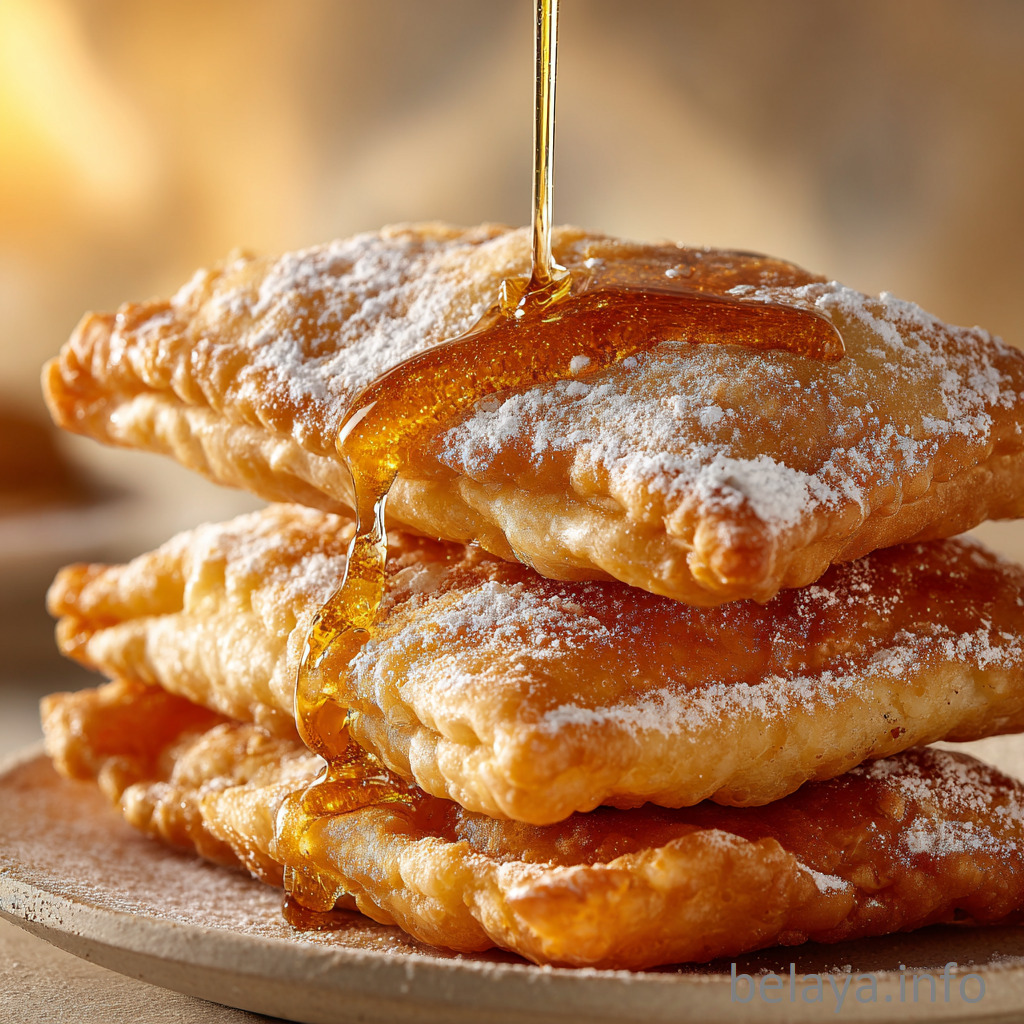
Why People Will Love This Sopapilla Recipe:
Simple Ingredients, Magical Results: Made from pantry staples, the dough puffs into golden, airy pillows—proof that comfort food doesn’t need to be complicated.
Crispy Outside, Soft Inside: Each sopapilla delivers the perfect contrast in texture: delicately crisp on the outside, tender and hollow on the inside, ready to catch warm honey or a sprinkle of sugar.
Customizable Sweetness: Whether finished with powdered sugar, drizzled with honey, or paired with cinnamon or chocolate, these pastries are endlessly adaptable to taste and occasion.
Perfect for Sharing and Celebrations: Sopapillas evoke joy and togetherness—they’re meant to be passed around the table, eaten warm, and enjoyed in good company.
Deep Cultural Comfort: Rooted in Southwestern and Latin American culinary traditions, this recipe connects people to heritage, memory, and the comforting rhythm of homemade food.
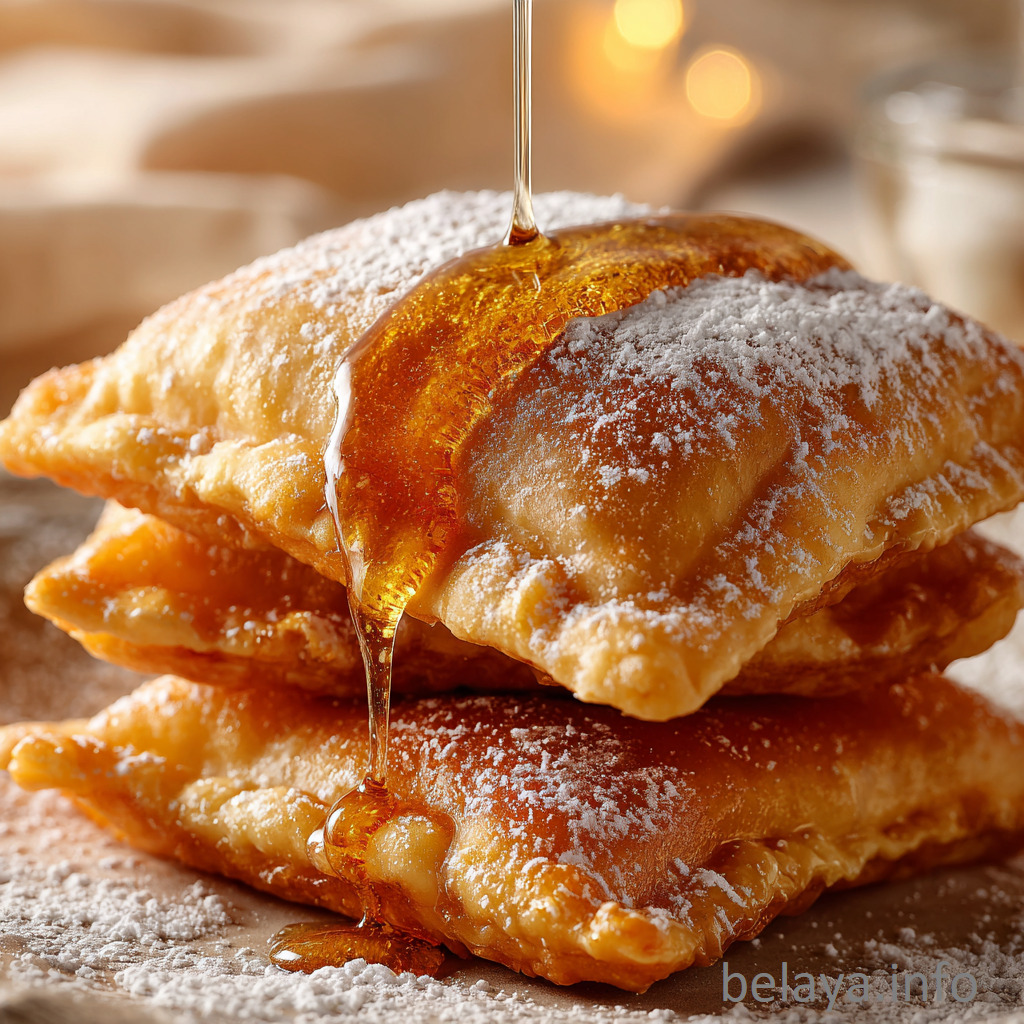
Key Ingredients:
All-Purpose Flour – The humble foundation of the dough, it creates structure while allowing the sopapillas to puff into airy, golden pillows when fried to perfection.
Baking Powder – The hidden engine of lift—this leavening agent gives each sopapilla its signature puff, turning a simple dough into something light, tender, and almost magical.
Salt – Just a touch sharpens the flavor, balancing the richness of the fried dough and enhancing the subtle sweetness of the final garnish.
Vegetable Shortening – Worked gently into the flour, it delivers flakiness and tenderness, ensuring each bite melts in your mouth.
Warm Water – The binding force that brings the dough to life—hydrating the flour and activating the baking powder for a soft, pliable texture.
Vegetable Oil – Not just for cooking, but transformation. As the dough hits the hot oil, it swells with air and crisps, turning soft rounds into delicate, hollow puffs of joy.
Honey & Powdered Sugar (Optional) – These finishing touches elevate the sopapillas from simple fried dough to a nostalgic dessert—sweet, sticky, and softly dusted with comfort.
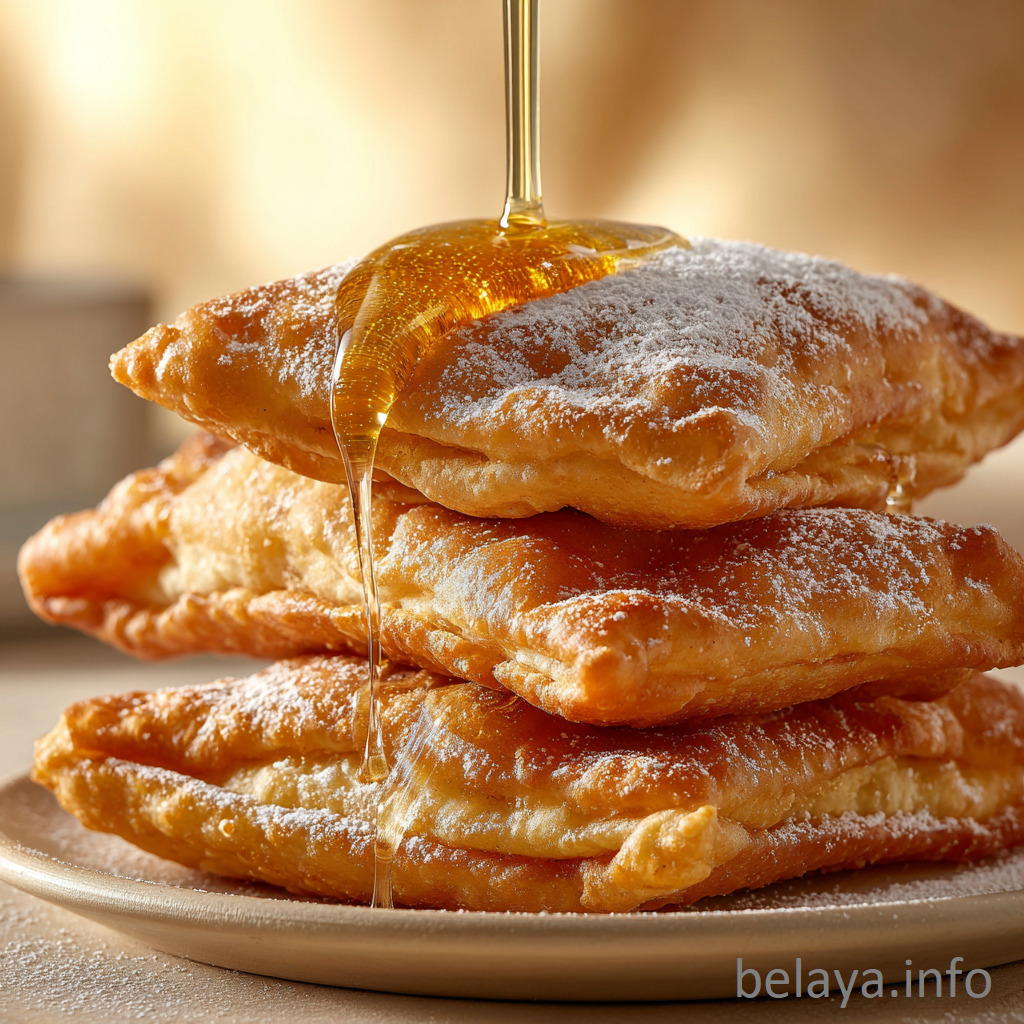
Expert Tips:
Rest the Dough—Don’t Skip This Step
Letting the dough rest after kneading allows the gluten to relax, making it easier to roll out and helping it puff more evenly during frying. It’s a quiet moment that leads to a perfect texture.
Heat the Oil Precisely
Temperature is everything. Aim for 350°F to 360°F. If the oil is too cool, the sopapillas won’t puff and will absorb too much oil. If too hot, they’ll brown before fully puffing. A kitchen thermometer is your secret weapon.
Roll Evenly for Even Puffing
An even ¼-inch thickness ensures that the sopapillas puff uniformly. Uneven dough can lead to flat or misshapen results. Use a light touch and roll from the center outward for consistency.
Do Not Crowd the Pan
Frying too many at once drops the oil temperature and prevents proper puffing. Fry in small batches, giving each piece room to expand and float freely.
Serve Immediately for Best Texture
Sopapillas are at their most magical when served warm—crisp outside, soft and hollow inside, perfect for drizzling honey or sprinkling with sugar. The texture fades with time, so enjoy them fresh for the full experience.
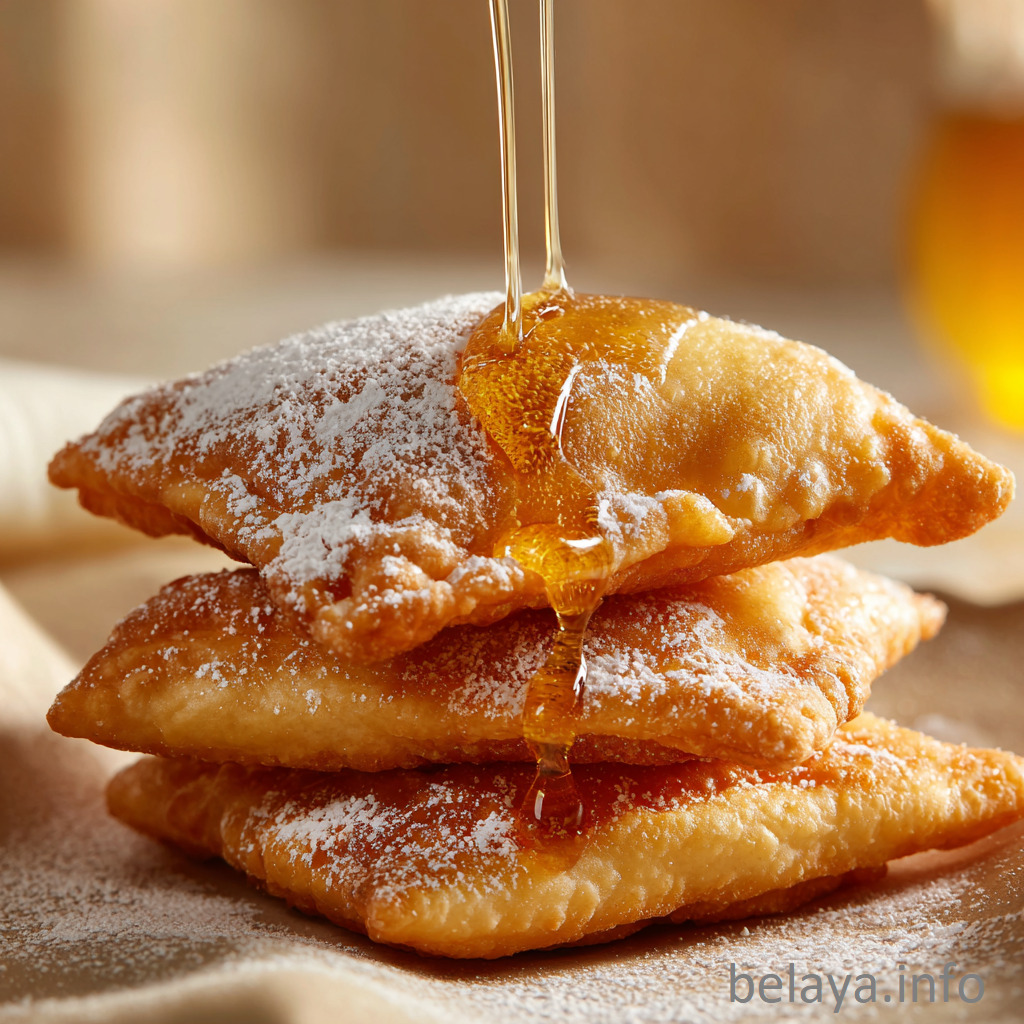
Sopapilla Recipe
Ingredients
1 ½ cups all-purpose flour, measured accurately by spooning and leveling
1 ½ teaspoons baking powder, for light and airy puff
½ teaspoon salt, to enhance flavor
1 ½ tablespoons vegetable shortening, for tender, flaky texture
½ cup warm water, to bring the dough together
3 cups vegetable oil, for deep frying (enough to fill pan about 2 inches deep)
Optional Garnishes:
Powdered sugar, for dusting
Honey, for drizzling over the warm sopapillas
Instructions:
In a large mixing bowl, whisk together the flour, baking powder, and salt until evenly combined.
Using a pastry cutter or fork, cut the shortening into the dry ingredients until the texture resembles coarse crumbs.
Gradually pour in the warm water while stirring with a spoon or your hand until a soft dough begins to form.
Knead the dough in the bowl for 2 to 3 minutes, just until smooth. Avoid over-kneading to keep the sopapillas tender.
Transfer the dough to a clean bowl, cover with plastic wrap, and let it rest for 15 minutes at room temperature.
While the dough rests, heat the vegetable oil in a deep, heavy-bottomed skillet or Dutch oven over medium-high heat to 350°F–360°F. The oil should be about 2 inches deep.
Once rested, place the dough on a lightly floured surface. Roll it out into a 9 x 12-inch rectangle.
Cut the dough into 12 squares or rectangles using a pizza cutter or sharp knife. You can adjust the size depending on how large or small you want your sopapillas.
Carefully fry the dough pieces in batches, ensuring not to overcrowd the pan. Fry each side for 1–2 minutes, or until puffed and golden brown.
Use a slotted spoon or spider strainer to transfer the sopapillas to a paper towel–lined plate to drain excess oil.
Optional: Sprinkle with powdered sugar and drizzle with honey while still warm for a sweet finishing touch.

Important Notes When Making Sopapillas Recipe:
Humidity and Altitude Affect Dough Behavior
Flour absorbs moisture differently depending on your environment. On humid days or at high altitudes, the dough may need slight adjustments—add water slowly and stop once the dough is soft, not sticky.
Use Fresh Baking Powder
Sopapillas rely heavily on baking powder for their rise. If it’s expired or weak, the dough won’t puff properly. Test freshness by adding a little to hot water—if it bubbles instantly, it’s active.
The Puff is the Goal—Not Just Color
Golden color is important, but the true mark of a great sopapilla is the hollow interior. This pocket forms when the dough hits hot oil and steam expands inside. It’s what gives the sopapilla its signature texture and makes it ideal for honey drizzling.
Cut With Clean, Sharp Edges
Use a pizza cutter or sharp knife and avoid dragging the blade. Clean cuts help the dough seal and puff as it fries—jagged or pressed edges may prevent the signature rise.
Don’t Skip the Paper Towels
Draining is essential. Even perfectly fried sopapillas can become heavy if excess oil isn’t removed. A quick rest on paper towels helps preserve their crisp exterior and light interior.
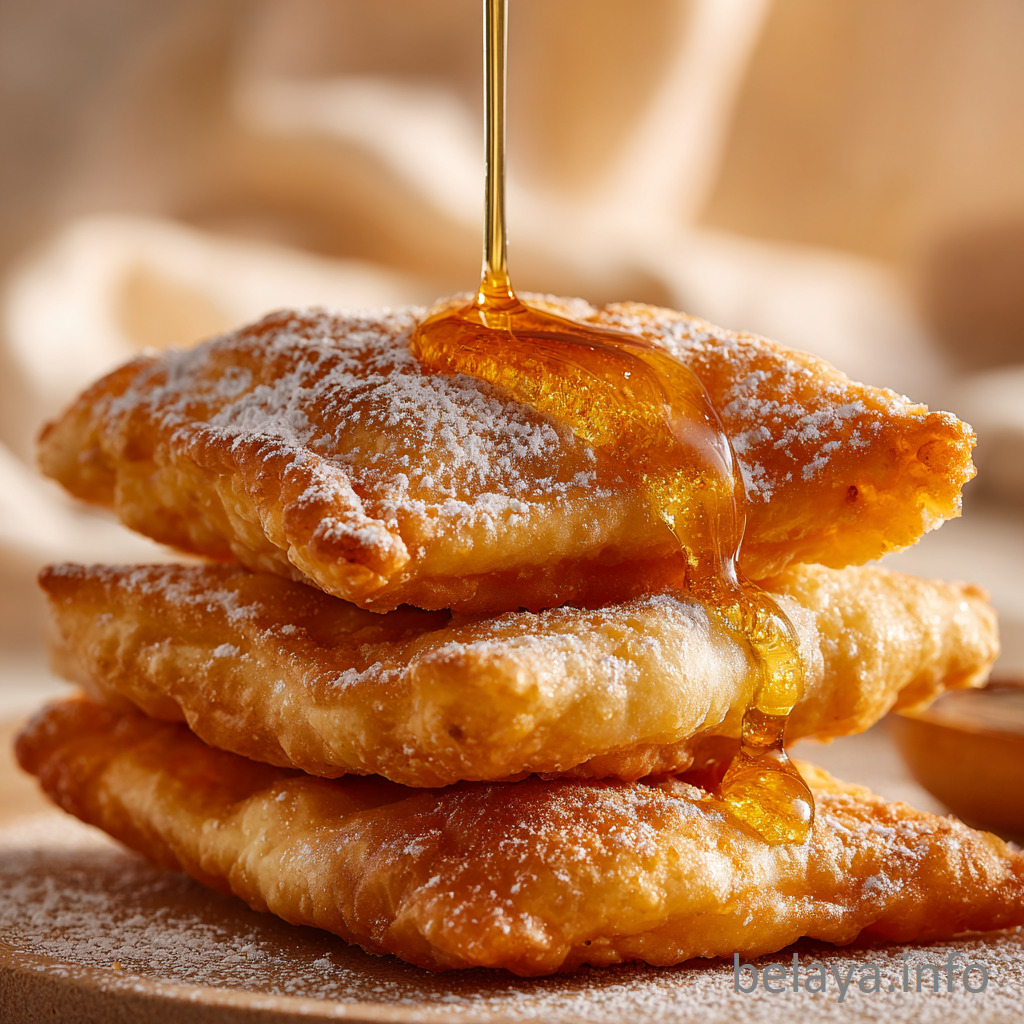
How To Enjoy Sopapillas After Cooking:
Serve Them While Still Warm
Freshly fried sopapillas are best enjoyed right away—when their outer shell is golden and crisp, and the inside is still warm and airy. The hollow center will have just enough steam to make each bite soft and inviting.
Add Sweet Finishing Touches
Elevate your sopapillas with traditional garnishes:
- Drizzle warm honey over the top and let it cascade into the puffed center.
- Dust with powdered sugar for a classic sweet contrast to the lightly salted dough.
- Sprinkle cinnamon sugar if you prefer a warm spice twist.
Get Creative with Dips and Fillings
Turn them into a customizable dessert:
Dip in melted chocolate, dulce de leche, or berry compote for richness.
Carefully split one side and fill with whipped cream, sweetened cream cheese, or ice cream for a sopapilla-style dessert pocket.
Pair Thoughtfully
Enjoy with a beverage that complements their warmth and sweetness:
- Hot chocolate or café de olla (Mexican spiced coffee) for a cozy, traditional pairing.
- Chai tea or cinnamon-spiced milk for a gently spiced option.
- Iced coffee or hibiscus tea to balance the richness on a warm day.
Store and Reheat with Care
If you have leftovers:
- Store cooled sopapillas in an airtight container at room temperature for up to 2 days.
- To reheat, use a toaster oven or oven at 300°F for 5–7 minutes. Avoid microwaving, which makes them rubbery.
- Reheat first, then add your garnishes to keep them crisp and fresh-tasting.

Nutrition Information
Per sopapilla (based on 12 servings from the full dough recipe, not including optional toppings):
Calories: 140 kcal | Total Fat: 7.8 g | Saturated Fat: 1.4 g | Monounsaturated Fat: 3.5 g | Polyunsaturated Fat: 2.6 g | Cholesterol: 0 mg | Sodium: 160 mg | Total Carbohydrates: 15.2 g | Dietary Fiber: 0.6 g | Sugars: 0.2 g | Protein: 2.1 g

Frequently Asked Questions:
Why didn’t my sopapillas puff up during frying?
The most common reasons are:
- The oil wasn’t hot enough (ideal is 350°F–360°F).
- The dough was rolled too thin or too thick.
- The dough wasn’t rested properly before frying.
Proper temperature, thickness, and rest time all work together to create that signature puff.
Can I make the dough ahead of time?
Yes! You can make the dough a few hours ahead and store it wrapped in plastic wrap in the refrigerator. Let it come to room temperature before rolling and frying. Avoid storing overnight, as the baking powder may lose effectiveness.
Can I bake sopapillas instead of frying them?
While traditional sopapillas are fried for that crisp, airy texture, you can bake them at 400°F for 8–10 minutes. They may not puff the same way but will still be soft and golden—just brush them lightly with oil or butter beforehand.
What kind of oil is best for frying?
Use a neutral, high smoke point oil like vegetable, canola, or peanut oil. These ensure clean flavor and safe frying at high temperatures.
Are sopapillas the same as beignets?
Not quite. Though both are fried dough, sopapillas are usually hollow and served with honey, while beignets are denser and covered in powdered sugar. Sopapillas often come from Southwestern or Latin culinary traditions, whereas beignets are famously New Orleans-style.
How do I know when the oil is at the right temperature for frying?
Use a kitchen thermometer to ensure the oil reaches 350°F–360°F. If you don’t have one, drop in a small piece of dough—it should sizzle immediately and begin to puff within a few seconds. If it sinks and doesn’t bubble, the oil is too cold; if it browns too fast, it’s too hot.
Should I knead the dough a lot or just a little?
Knead the dough just until smooth—about 2–3 minutes. Over-kneading develops too much gluten, which can make the sopapillas tough instead of tender and airy.
Can I use butter instead of shortening?
Yes, you can substitute cold unsalted butter for shortening, but the texture may be slightly different. Shortening yields a flakier, puffier result, while butter adds flavor but may reduce rise slightly due to its water content.
Why is it important to rest the dough before rolling it out?
Resting the dough relaxes the gluten, making it easier to roll and helping the sopapillas puff properly during frying. Skipping this step can lead to flat or chewy results.
What’s the best way to cut the dough for even puffing?
Use a sharp knife or pizza cutter and make clean, straight cuts. Avoid using dull tools or pressing too hard, which can seal the edges and prevent the steam from puffing the center during frying.